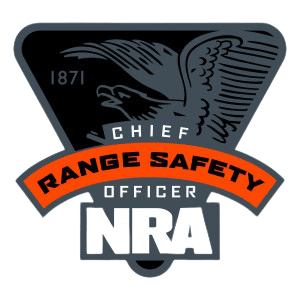Online ProQual Level 6 Diploma in Hostile Environment Operations
Introduction
Entry Requirements
Qualification Structure

Assessment
Each candidate is required to produce evidence which demonstrates their achievement of all of the learning outcomes and assessment criteria for each unit.
Learning outcomes set out what a candidate is expected to know, understand or be able to do.
Assessment criteria specify the standard a candidate must meet to show the learning outcome has been achieved.
Evidence can include:
- assignments/projects/reports
- worksheets
- portfolio of evidence
- Recognition of Prior Learning
- candidate test papers
AWARDS
Level
6
Prerequisites
- ProQual Level 4 Award in Close Protection in a Hostile Environment – Firearms and Tactics
- ABA Level 3 Certificate in Hostile Environment Awareness
Assessment
Learning Outcomes and Assessment Criteria
Hostile Environment Operations
Learning Outcome - The learner will: Assessment Criterion - The learner can:
- Effectively plan and prepare for operating in a complex/hostile environment
- Competently operate within a crisis management team.
- Demonstrate personal security strategies.
- Demonstrate an understanding of foreign liaisons.
- Understand the dynamics of radio procedures.
- Be competent in incident management.
- Have a generic understanding of weapons and mines.
- Understand the generic make-up and deployment of mines.
- Mitigate the escalation of civil unrest and demonstrations.
- Understand Improvised explosive device generics and their methodology
- Conduct vehicle search.
- Provide crisis management within an active shooter scenario.
- Follow methodology for conduct under capture/hostage taking.
- Be competent in escape and evasion techniques.
- Show techniques to sustain life.
- Be able to plan safe routes of passage.
- Conduct vehicle ambush drills.
- Conduct vehicle mine strike drills.
- Demonstrate vehicle breakdown techniques in remote locations.
- Understand ballistics and their capabilities.
- Show an understanding of firearm characteristics and manipulation.
- Identify the reasons for the covert carry of a firearm.
- Gain close quarter combat skills (CQC – Self Defence).
- Be able to conduct surveillance within a complex/hostile environment.
- Be able to conduct Building/Venue reconnaissance.
1. Effectively plan and prepare for operating in a
complex/hostile environment
1.1 Use context analysis to analyse the area of
operation.
1.2 Assess the threats and risks posed against them.
1.3 Show an in-depth understanding of contingency
planning.
1.4 Provide incident management analysis.
1.5 Analyse elements of an evacuation plan.
2. Competently operate within a crisis management
team.
2.1 Evaluate and manage incidents.
2.2 Define a security incident.
2.3 Define a critical incident.
2.4 Analyse the principals of incident management.
3. Demonstrate personal security strategies. 3.1 Justify the importance of specific affects to be
carried whilst on movements within a complex/hostile
environment.
3.2 Demonstrate preparation for Health, Hygiene and
personal medical care.
4. Demonstrate an understanding of foreign liaisons. 4.1 Mitigate threat and risks within liaisons, in foreign
lands.
4.2 Analyse standard operating procedures for foreign
liaison aspects.
4.3 Mitigate the threat and risks throughout
checkpoint procedures.
4.4 Demonstrate checkpoint approach standard
operating procedures.
4.5 Mitigate carjacking and show appropriate
responses.
5. Understand the dynamics of radio procedures. 5.1 Grasp a basic understanding of radio procedures.
6. Be competent in incident management. 6.1 Identify procedures of managing incidents in the
field.
6.2 Mitigate incidents in the field.
6.3 Devise a comprehensive vehicle check list.
7. Have a generic understanding of weapons and
mines.
7.1 Define between hard and soft cover.
7.2 Demonstrate actions on for Gunfire when walking.
7.3 Demonstrate actions on for Gunfire when in a
building.
7.4 Demonstrate actions on for Gunfire within a
vehicle.
7.5 Demonstrate actions on for Artillery/Rocket fire.
7.6 Demonstrate actions on for a Grenade attack.
8. Understand the generic make-up and deployment of
mines.
8.1 Demonstrate mine awareness.
8.2 Show an understanding of mine detection.
8.3 Demonstrate vehicle standard operating
procedures for a mine strike.
9. Mitigate the escalation of civil unrest and
demonstrations.
9.1 Be competent within confrontational situations.
9.2 Mitigate threat and risks within the remit.
10. Understand Improvised explosive device generics
and their methodology
10.1 Define between an improvised explosive device
and military ordinance.
10.2 Categorise improvised explosive device types.
10.3 Show an understanding of common components
and the generic make-up of an improvised explosive
device.
10.4 Mitigate threats from victim activated booby
traps.
10.5 Show a comprehensive understanding of
improvised explosive devise incidents, and nonimprovised explosive devise incidents.
10.6 Clearly define an improvised explosive device.
11. Conduct vehicle search. 11.1 Follow vehicle search standard operating
procedures.
11.2 Define the four (4) C’s.
11.3 Effectively lease with the emergency services.
12. Provide crisis management within an active shooter
scenario.
12.1 Quickly determine the most reasonable way to
protect life.
12.2 Provide correct information to the emergency
services operator.
12.3 Respond correctly to the authorities on their
arrival.
12.4 Devise an emergency action plan.
12.5 Manage the consequences of an active shooter
scenario.
13. Follow methodology for conduct under
capture/hostage taking.
13.1 Define why hostages are taken.
13.2 Demonstrate self-care in the given aspect.
13.3 Identify the effects of deprivation on sensory
stimuli.
14. Be competent in escape and evasion techniques. 14.1 Demonstrate escape techniques from restraints.
14.2 Always follow the four (4) A’s.
14.3 Evaluate the importance of a support network.
14.4 Understand the effects of deprivation within the
captive aspect.
14.5 Demonstrate a level of map reading.
14.6 Analyse evasion techniques.
14.7 Define movement techniques.
15. Show techniques to sustain life. 15.1 Show fire lighting skills.
15.2 Demonstrate water collection techniques.
15.3 Show appropriate shelter building methodology to
climatic conditions.
15.4 Demonstrate food preparation and cooking
methods.
15.5 Show methods of trapping quarry.
15.6 Demonstrate coastal survival techniques.
15.7 Demonstrate off-shore survival techniques.
16. Be able to plan safe routes of passage. 16.1 Analyse the importance of route planning.
16.2 Define how geography and timings affect safe
route planning.
16.3 Designate safe havens and communications within
route contingency planning.
17. Conduct vehicle ambush drills. 17.1 Adhere to standard operating procedures for soft
skinned or armoured vehicles.
17.2 Demonstrate the use of cover in specific firearms
related situations.
17.3 Deploy anti ambush drills for a contact front.
17.4 Deploy anti ambush drills for a contact left.
17.5 Deploy anti ambush drills for a contact right.
18. Conduct vehicle mine strike drills. 18.1 Follow extraction procedures.
18.2 Assess situation and respond accordingly
(upwards reporting)
19.Demonstrate vehicle breakdown techniques in
remote locations.
19.1 Apply rope techniques and methods to self-rescue
a multitude of vehicle emergencies.
19.2 Wheel change using limited equipment.
20. Understand ballistics and their capabilities. 20.1 Define the reasons for different levels of
protective armour.
20.2 Assess the generic make-up and structure of a
building and its best ballistic safe havens.
21.Show an understanding of firearm characteristics
and manipulation.
21.1 Demonstrate normal safety procedures
proficiently.
21.2 Identify the dangers of firearms within a vehicle
during travel.
21.3 Identify the procedures – procurement and laws
within areas of operation.
21.4 Identify the reasons for maintenance.
21.5 Demonstrate firing positions.
21.6 Deploy small team tactics.
22. Identify the reasons for the covert carry of a
firearm.
22.1 Demonstrate covert carry techniques.
22.2 Appropriate the use of different holsters.
22.3 Define the reasons for covert carry.
23. Gain close quarter combat skills (CQC – Self
Defence).
23.1 Perform restraint of a subject.
23.2 Demonstrate the use of the nerve’s system within
a non-strength aspect.
23.3 Utilize common objects for self defence.
23.4 Perform break away techniques.
23.5 Demonstrate defence against a bladed
implement.
23.6 Demonstrate defence against a baton/bat attack.
23.7 Demonstrate weapons disarm techniques (pistol –
rifle).
23.8 Demonstrate a variety of strike techniques.
23.9 Utilize the use of hand cuffs/zip ties for control of
a subject.
24. Be able to conduct surveillance within a
complex/hostile environment.
24.1 Mitigate the reasons for the deployments of
concealed equipment or operatives.
24.2 Define hostile surveillance locations and the
severity of the threat they pose.
24.3 Deploy counter measures.
24.4 Analyse infill – exfill methods and drop off
techniques.
24.5 Prepare a vehicle for infill – exfill.
24.6 Analyse a plan for observation post (O.P)
placement, defined by the geography threat and risk.
24.7 Define the uses of different concealment
methods.
24.8 Devise and carry out a RIPA style log book.
24.9 Deploy within a rural/urban surveillance role
within an intelligence gathering operation.
25. Be able to conduct Building/Venue reconnaissance. 25.1 Devise mapping of zones one (1) to three (3).
25.2 Analyse contingency plans for building/venue
compromise on foot/vehicle – R.V’s F.R.V’s.
25.3 Mitigate threat through deployment of necessary
building/venue security aspects.
25.4 Dedicate a medical room.
25.5 Identify a suitable location of a panic/safe room.
25.6 Identify a suitable location for an Operations
room.
25.7 Instigate operational security.
25.8 Identify local safe havens.
25.9 Analyse the generic make-up of a building/venue
for strong/weak points.
25.10 Control building/venue access.
25.11 Assess resources for hibernation timeframes
(food and water).
25.12 Evaluate casualty evacuation procedures.
25.13 Demonstrate the use of hard cover for
movements within the location/complex within siege
aspects.
25.14 Analyse the building/venue for an over
watch/high vantage point.












